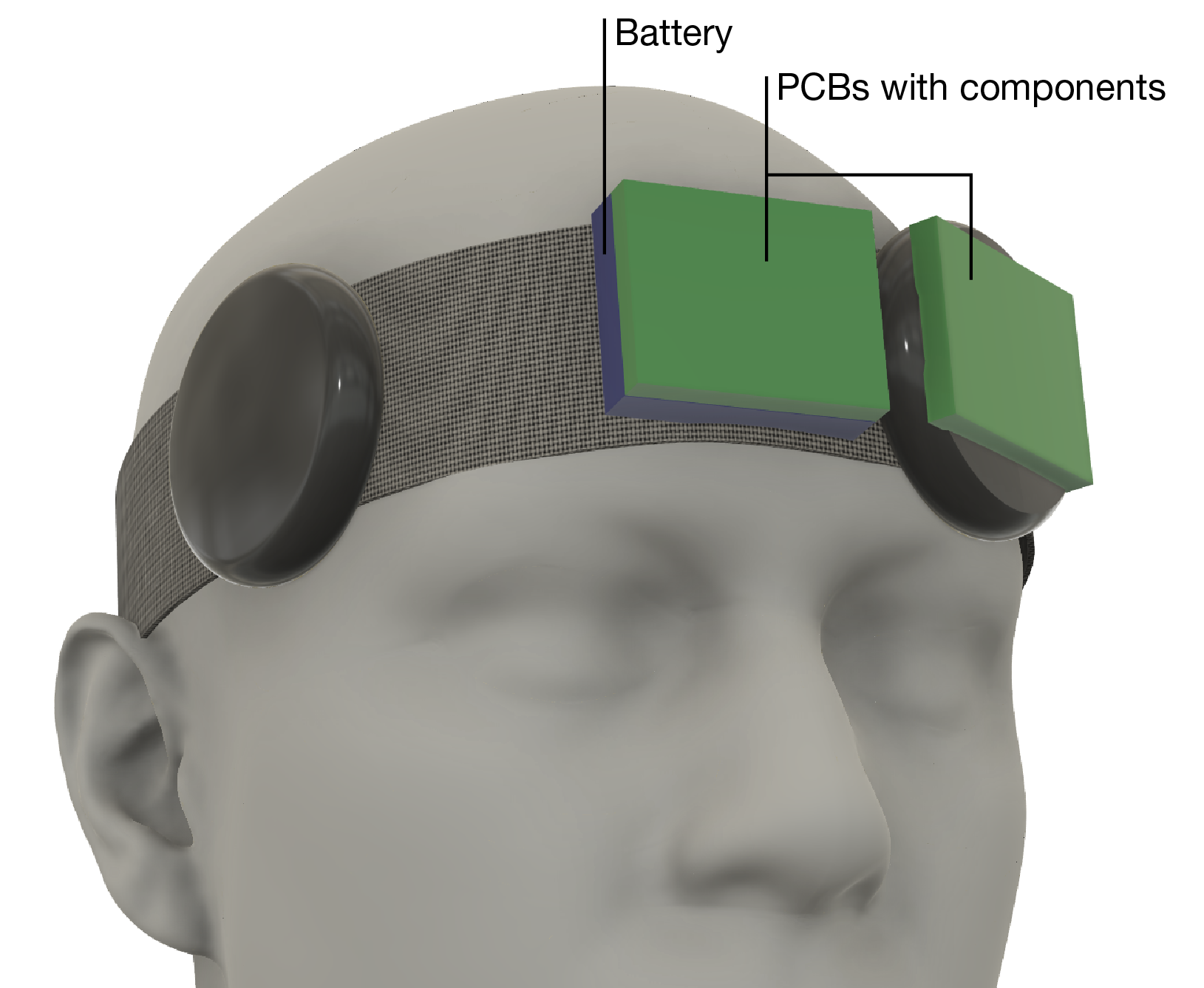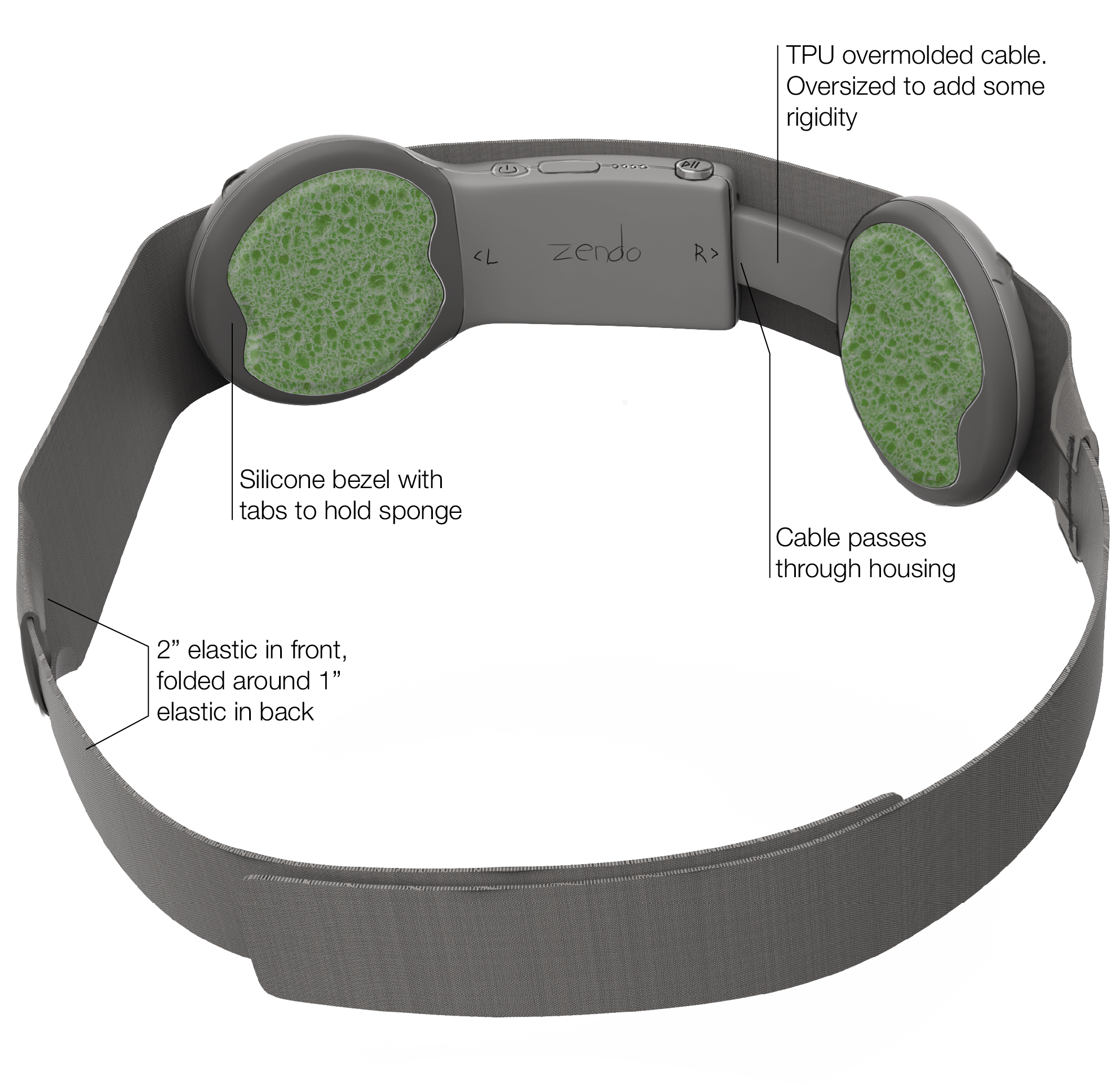
ZENDO MEDITATION
Freelance client project, completed in 2023. Collaborated with other freelance engineers and graphic designers. In addition to doing the industrial design, the client asked me to officially become the project manager after I had naturally already taken that role.
invented by neuroscientists
Bashar Badran and Baron Short discovered the neural pathway that’s active during deep meditation. They invented a device that stimulates this pathway with electricity. This gives the positive benefits of meditation, without any training!
“The effects are amazing, but I feel like I’m in a science experiment”
Early adopters could overlook this, but the founders didn’t believe the current design would let them “cross the chasm” to broader adoption.
Zendo needed a more approachable, easy to use product in order to scale
Core Customer
Healthy lifestyle, practice yoga or other fitness activities
Age 20s - 50s
“Meditation-aware”: they know there are benefits, but they’ve either never tried, or tried and failed, or used to meditate regularly but fell out of it
This is who Zendo has already gotten traction with
Aligning on an aesthetic
“Not too futuristic, and not too medical” — Client’s request
Clean, rounded forms
Soft touch materials, matte finish
Textile integration
Architectures
Pill
hidden
Pucks
Mechanical
Electronics package: How big is it, really?
Battery and PCB sizes were estimated by our electrical engineer.
CAD Mockups
Based on estimated component size.
More garment-like, more approachable!
Fitting 99% of head sizes, with adjustable electrode placement
Zendo doesn’t work if the electrodes are placed incorrectly! We had to make the overall size adjustable, as well as the individual electrodes.
We analyzed 3D scanning files from NIOSH to figure out the correct sizing and adjustment range.
Concept A: Big Slider
Electrode and electronics slide together. The electrode doesn’t need special wiring to allow for movement.
Uneven pressure on the electrode can cause a burn. This concept won’t work.
Concept B: Small Slider
Electrode slides, electronics are fixed. A wire floats freely inside the plastic housing.
Better, but still pretty bulky.
Concept C: Separated
Electrode slides, electronics are fixed. A wire is sandwiched between the webbing and headband.
Success! Comfortable, functional, and slim.
user experience
1. Insert sponges
2. select mode
3. don headband
4. meditate!
Final Design intent
production
Credits
My role: lead designer, project manager
Anatoliy Dzhuga: mechanical engineering, DFM
Nate Baltikas: branding, graphic design, packaging


























